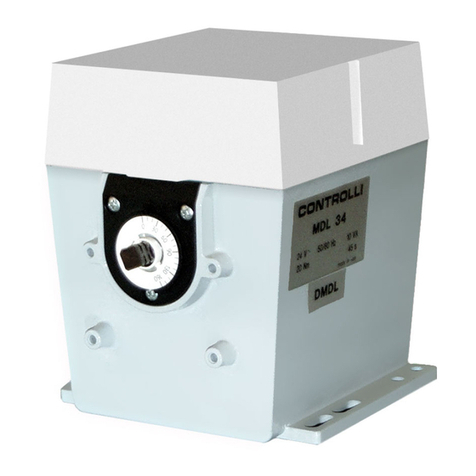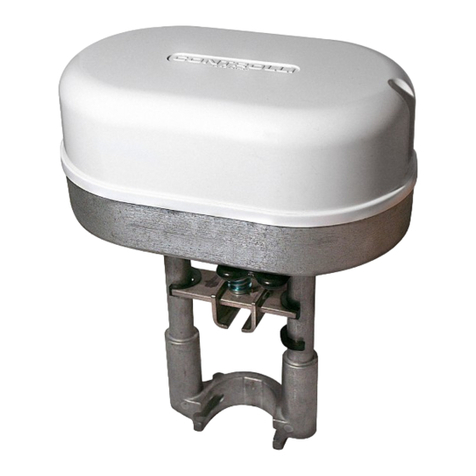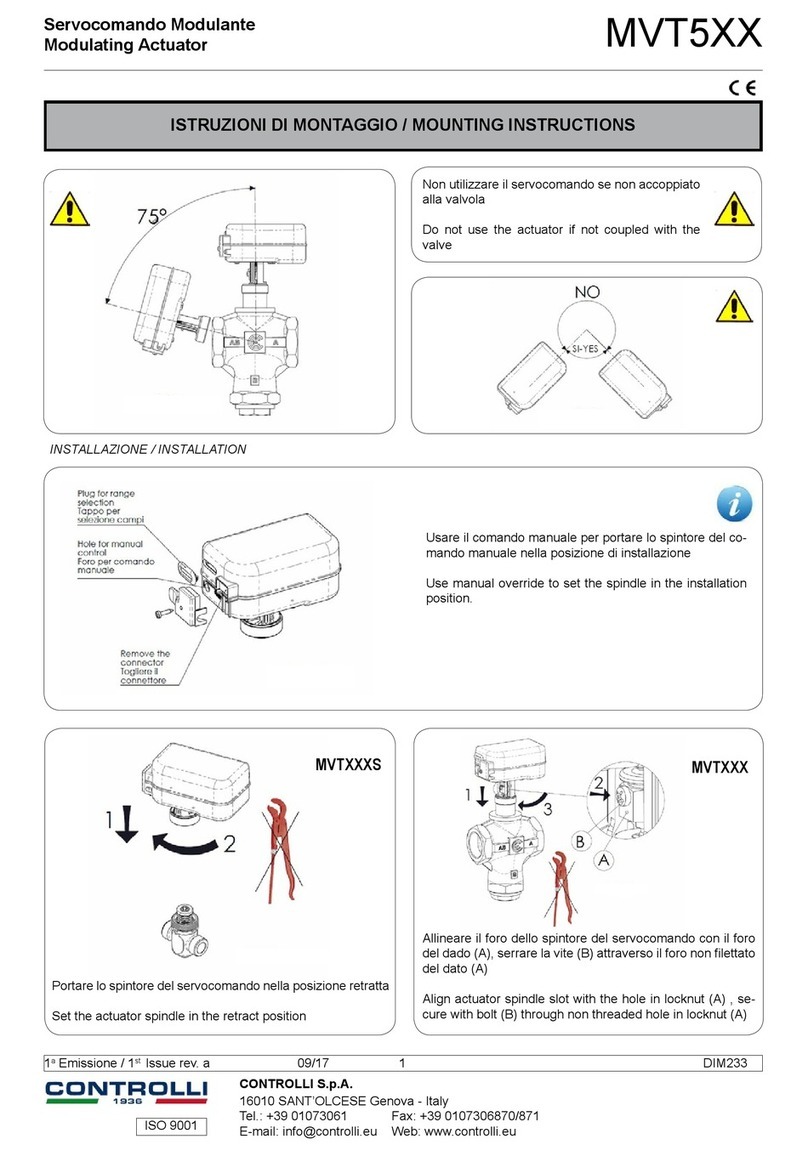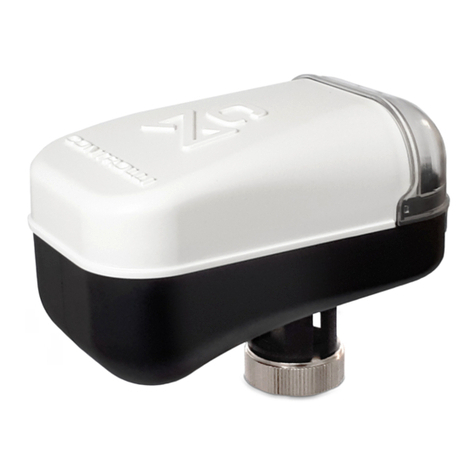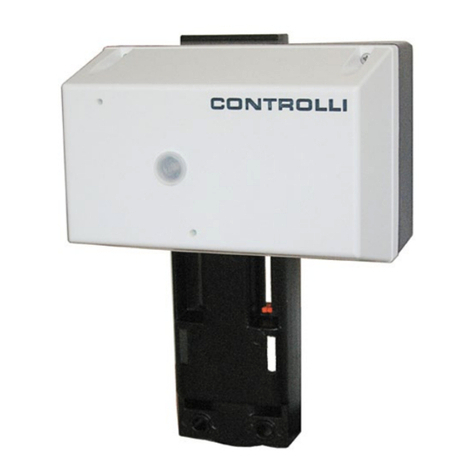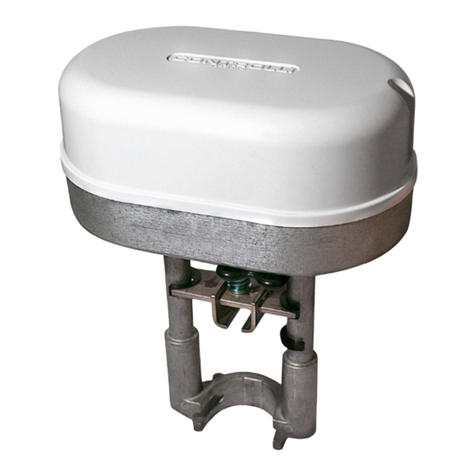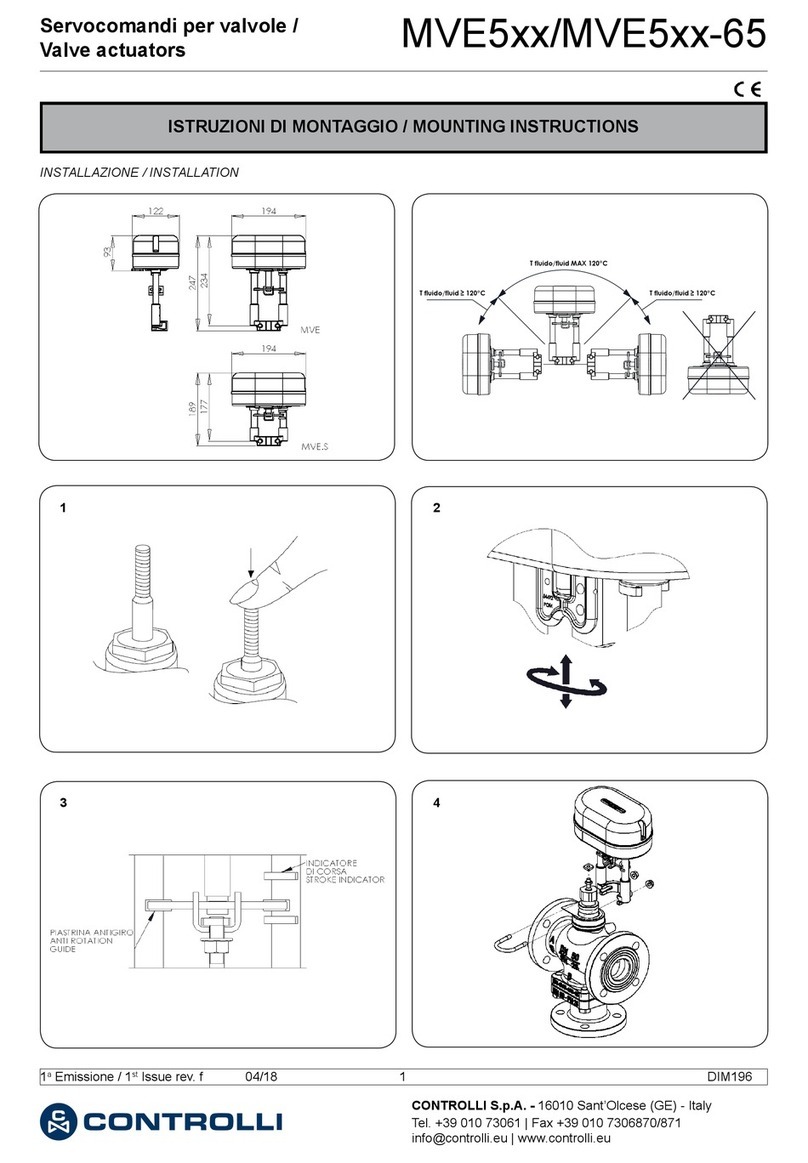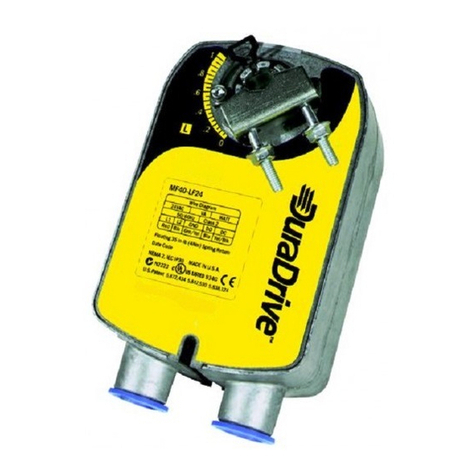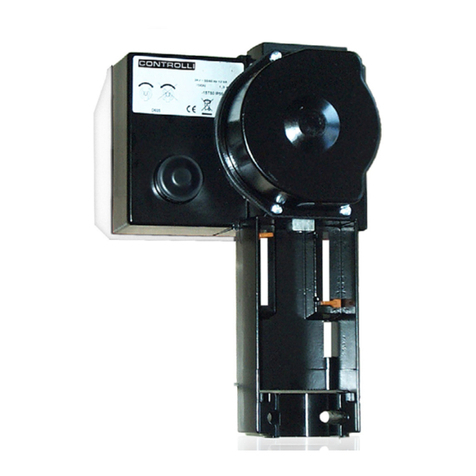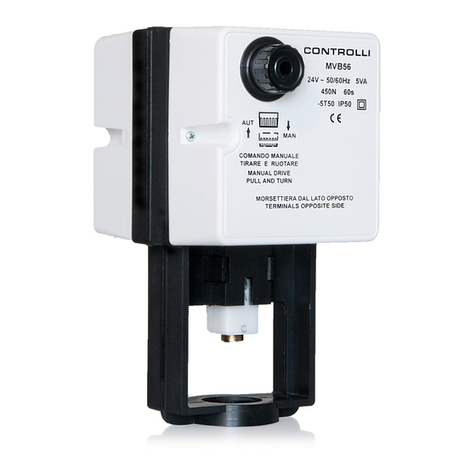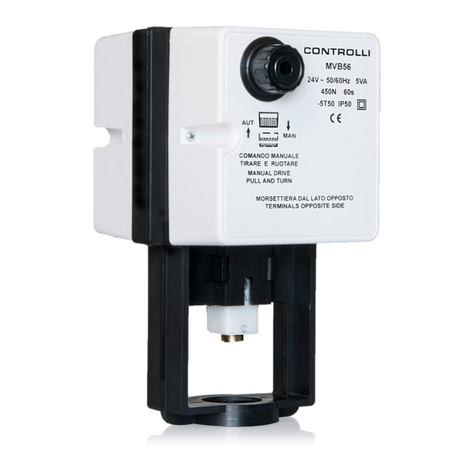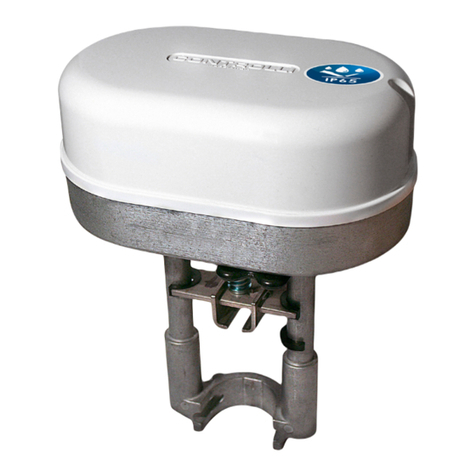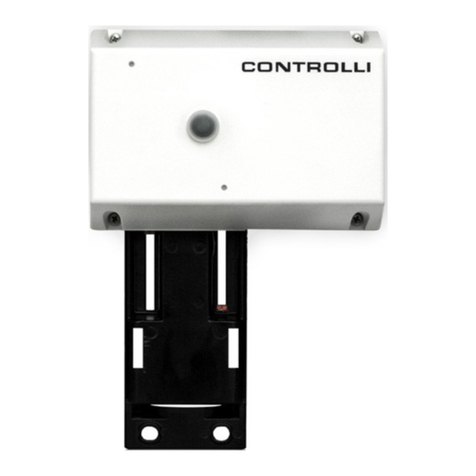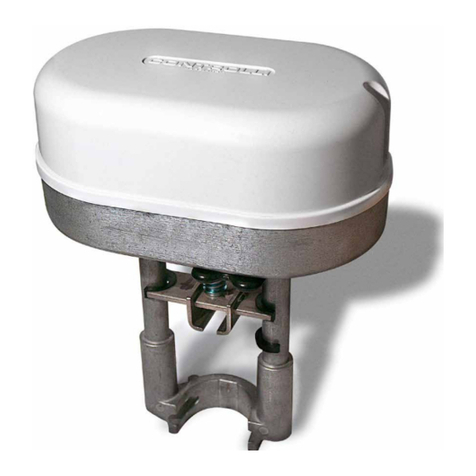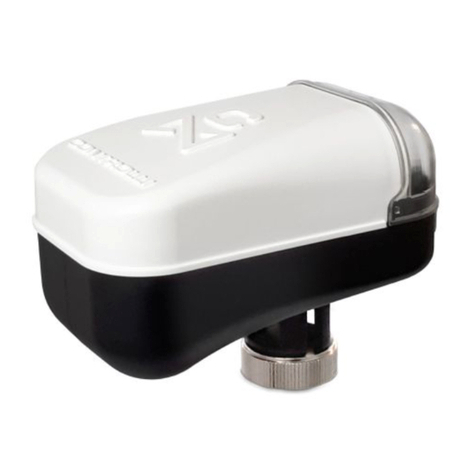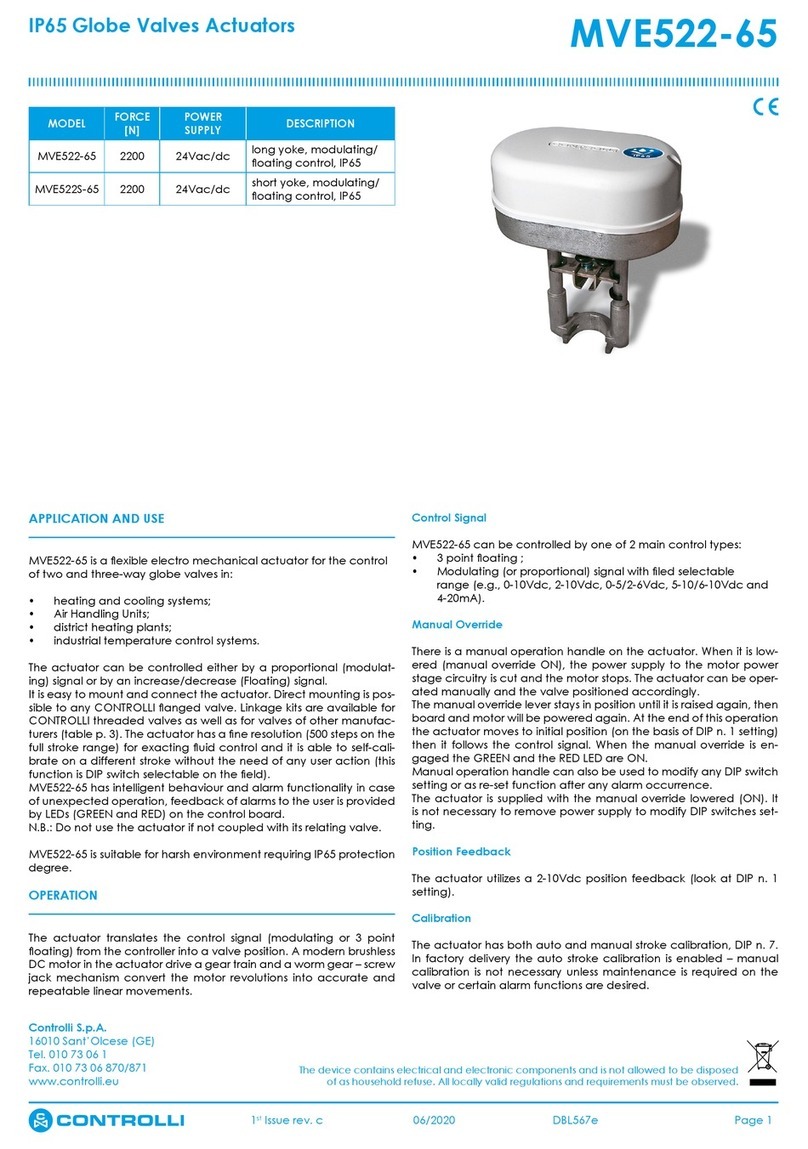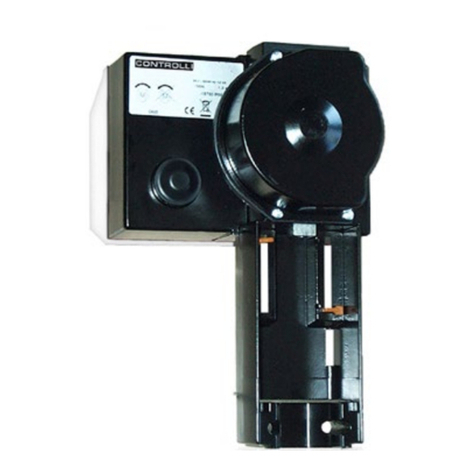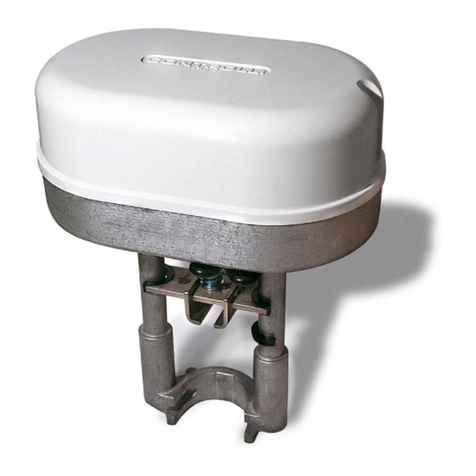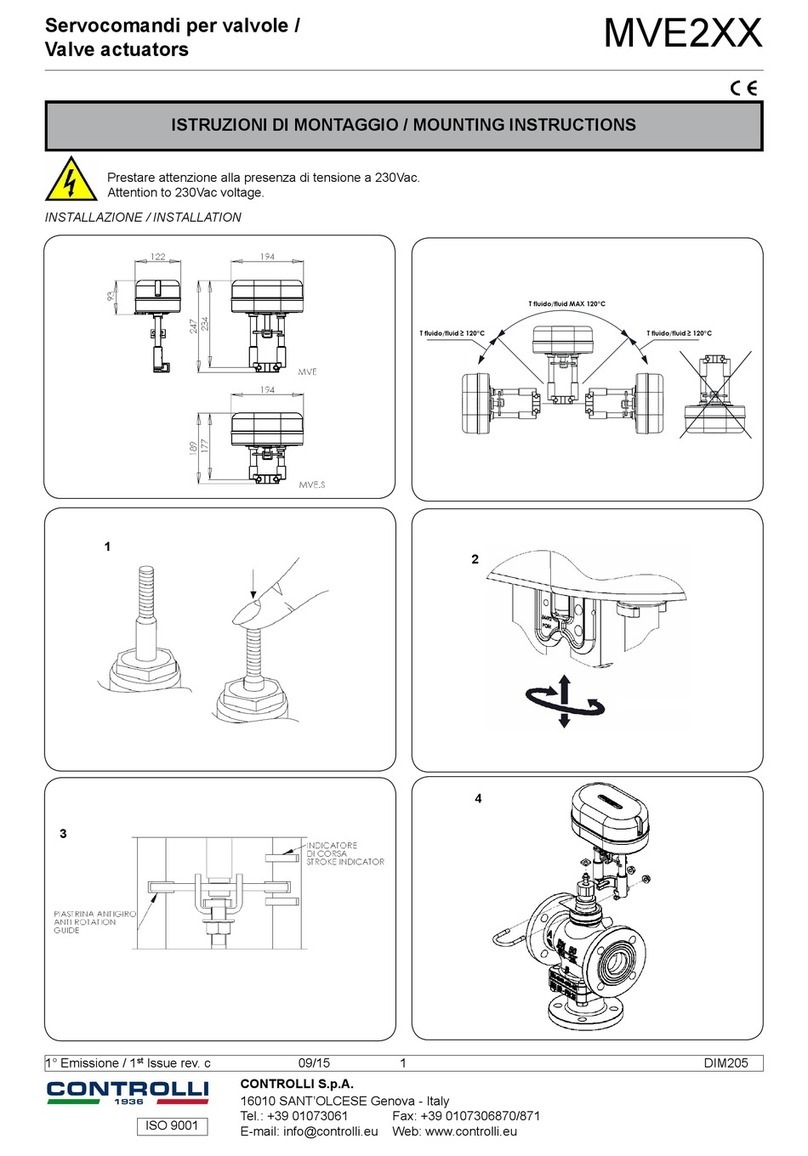
Le caratteristiche contenute in questa pubblicazione possono essere modifi cate senza preavviso
The performances stated in this sheet can be modifi ed without any prior notice
1a Emissione / 1st Issue rev. a 04/2020 5DIM152
Il dispositivo contiene componenti elettrici ed elettronici e non può essere smaltito con i riuti domestici. Vanno rispettate le normative locali sullo smal-
timento.
The device contains electrical and electronic components and is not allowed to be disposed of as household refuse. All locally valid regulations and
requirements must be observed.
Function in the Description
“OFF” pos. “ON” position
1 2-10 Vdc 0-5 Vdc Feedback signal
2 Modulating Increase/decrease Control (not at Sequence)
3 – Sequence Sequence control
4 0-10 V 2-10 V Voltage range
5 1-5 V, 4-7 V 6-9 V, 8-11 V Part of voltage range
6 60 s 300 s Running time
7 Normal Inverted Direction of movement
8 Normal Linear/Logarithmic Valve characteristic
9 Operation End position adjust Operation/End position adjustment
There are nine switches in a row on the
circuit board. On delivery (’Factory’), all
switches are in the “OFF” position.
1. Feedback signal 2-10 / 0-5 Vdc
MVHFA actuators are equipped with a 2
-10 and 0-5Vdc position feedback signal
selectable by Switch No 1.
2. Control signal (MOD/INC)
Actuator can either be controlled by a
variable direct voltage, a so called mod-
ulating signal (MOD), or by an increase/
decrease signal (INC).
3. Sequence or parallel control (---/SEQ)
With sequence (or parallel) control (SEQ),
two actuators/valves can be controlled
by only one control signal.
For each of these you can choose which
part of the voltage range to use, the
upper one, 6-9 V (8-11 V) or the lower
one, 1-5 V (4-7 V).
If the switch NORM / INV is in NORM po-
sition, the higher voltage corresponds
to 100% ow and the lower one to 0%.
With NORM / INV in the INV position you
will get the opposite function.
4. Voltage range (0-10 / 2-10)
You can choose whether to use the con-
trol signal voltage range 0-10 V or 2-10 V.
5. Part of voltage range (1-5, 4-7 / 6-9,
8-11)
You can choose which part of a volt-
age range to use, the lower one 1-5 V
(4-7 V) or the upper one 6-9 V (8-11 V).
If the switch is in the NORM position, the
higher voltage corresponds to 100% ow
and the lower one to 0%. To achieve the
opposite function, the switch should be
put in its INV position.
6. Running time 60 s / 300 s
With increase/decrease control, you
can choose a running time between
60 s or 300 s.
With modulating control, the running time
is always 15 s / 20 s / 30 s.
7. Direction of movement NORM / INV
When NORM is selected, the spindle of the
actuator moves inwards when the control
voltage decreases or if the actuator gets
a decrease signal.
With the switch NORM / INV, the direction
of movement can be changed.
8. Linearization (NORM / LIN/LG)
The motorized valve characteristics can
be modied. If you wish for the char-
acteristics to be affected, the setting
LIN/LG will make the characteristics of
an equally modied percentage (EQM)
valve almost linear.
On the other hand, with LIN/LG a motor-
ized valve equipped with a linear valve
will operate with ”Quick open charac-
teristics”. This means that with a small
control signal, the valve will be almost
completely open.
Note! For the actuator to register new
settings of the switches, the supply volt-
age must be cut, the settings done and
then the power on
or
the end position adjustment must be
done again (see point 9).
Refer also to illustration on page 2.
9.End position adjustment (OP / ADJ)
This switch is only used to adjust the end
positions when the actuator is commis-
sioned.
With powered actuator, momentarily put
the switch in the ON position. The actuator
will automatically nd the end positions of
the valve. At the end of the adjustment
all the other dip switch settings (1 to 8)
will be read again.
compresa tra 60s e 300s. Con azione
modulante la temporizzazione è sempre
15 s/20 s/30 s.
7. Senso di funzionamento (NORM / INV)
Quando viene impostato NORM, la vite
del servocomando si muove verso l’in-
terno del servocomando con:
- tensione di regolazione in diminuzione
(comando proporzionale)
oppure
- comando 3 punti in chiusura (VC)
Con l’interruttore NORM / INV si inverte
la direzione di azionamento.
8. Linearizzazione (NORM / LIN/LG)
Le caratteristiche di portata delle valvole
motorizzate possono essere modicate.
Se si desidera modicare tali caratteristi-
che, l’impostazione LIN/LG renderà quasi
lineare la caratteristica di una valvola
equipercentuale (EQM).
Al contrario, con LIN/LG una valvola
motorizzata dotata di caratteristica li-
neare funzionerà con “Caratteristica di
apertura veloce”. Questo signica che
un segnale di comando piccolo aprirà
la valvola quasi completamente.
Attenzione! Afnché il servocomando re-
gistri le nuove impostazioni degli interrut-
tori, occorre disalimentare e rialimentare
il servocomando
oppure
ripetere l’operazione di taratura ne
corsa
(vedi punto seguente)
Fare riferimento anche alle gure a pag.2.
